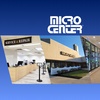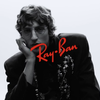“It was nice to get to play something a little different,” said trombonist Brett G.B. Wostzman ’06, adding that the band’s repertoire tends to be repetitive. “I thought it was a really interesting opportunity for a gig.”
A DIVERSE CROWD
Even at 5 a.m., a considerable crowd was on hand. Schechner said she was surprised to find that within the first 10 minutes, most of the 300 wristband passes for roof viewing had been handed out.
The activities at Harvard drew a wide range of people, from local families and alums attending reunions, to professional and amateur astronomers.
While most of the participants hailed from the Cambridge-Boston area, some amateur astronomers came in from as far away as Indiana or California.
For Elizabeth Murphy, the event was a family affair. She attended with her four daughters, ages 6 to 10. Murphy said she learned of the gathering through physics department Chair John Huth, who also brought his son and daughter.
Murphy said she believes her children benefitted from the day’s presentation, and were encouraged by its novelty.
“To get a real life example in astronomy, especially for girls, could make a big impression,” Murphy said.
Some Harvard students in the area for the summer—including Ashwin Kja ’07, Tiffany Chou ’07, Jacquelyn Chou ’07 and their friend Jeff Aung, a Columbia student—arrived around sunrise at 5:09 a.m, and got to the roof just before cloud cover settled over the Sun around 6:40 a.m.
The group saw Venus cross the sun’s disk briefly using special solar filter glasses before the sun moved behind the clouds for the remaining duration of the transit.
“It waited for us,” Kja quipped.
HANDS-ON ASTRONOMY
For professional astronomers, the Venus transit served as both an exciting observing opportunity and as a positive source of publicity for astronomy.
Paine Professor of Practical Astronomy Josh Grindlay, who gave one of the day’s lectures, said that focusing on the accomplishments of Harvard astronomers in making early distance measurements could draw attention to the efforts of current Harvard astronomers charting the dimensions of the universe on the largest scales.
The transit coincided as well with a meeting in Cambridge of the team for NASA’s Kepler mission, which aims to detect Earth-like extrasolar planets using transits.
Read more in News
POLICE LOG












